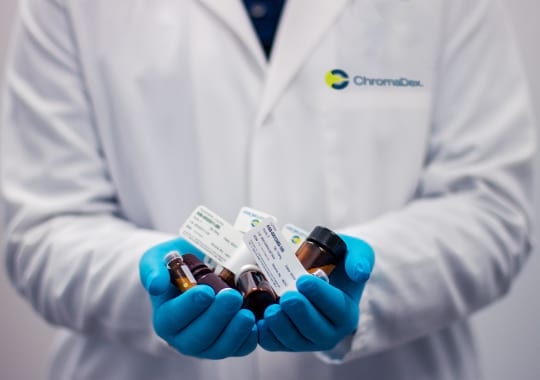Wound infection pathogen panel detects 24 fungal and bacterial targets.
Urinary tract infection (UTI) Panel
Urinary Tract Infections (UTIs) are the most common infections worldwide that occur when bacteria or yeast infiltrate the urinary tract. They pose a significant burden on patients’ well-being and healthcare system worldwide. UTIs vary in severity from mild forms like urethritis and cystitis ot sever conditions such as pyelonephritis and septic shock, presenting diverse symptoms and treatment challenges. A wide range of virulence factors and multi-drug resistant pathogenic strains are involved in the pathogenicity and resistance of the uropathogenic agents, making it challenging to manage and treat these complicated infections. A complicated UTI has a higher risk of treatment failure and recurrence. Severe cases can lead to urosepsis and can be fatal. Identifying the causative agent and determining susceptibility are paramount to treating these cases.
Laboratories can detect the presence of bacteria in the urine of patients with UTI infections by using various diagnostic tests, including standard urine culture (SUC), direct microscopy, and, most recently, molecular technologies such as Polymerase Chain Reaction (PCR) and reverse transcription Polymerase Chain Reaction (RT-PCR).
While traditional diagnostics methods like standard urine culture (SUC) and direct microscopy have been long employed, they have limitation in terms of turnaround time, accuracy, and limitation with pre-analytic variables that could affect the viability of bacterial isolates. However, multiplex PCR testing emerges as a particularly promising tool, enhancing the precision of pathogen identification with higher sensitivity and enabling simultaneous detection of antibiotic resistance markers. Unlike conventional cultures, PCR-based approaches are less susceptible to pre-analytical variables and can detect a broader array of microorganisms, even in scant quantities, thereby providing a more exhaustive insight into chronic infections.
This capability of PCR based approach provides a more comprehensive overview of the microbial community within chronic infections, facilitating targeted and effective treatment strategies. and detect the presence of antibiotic resistance in one test. Molecular technologies can produce same-day patient results, which enables a reduction of reliance on empiric therapy for treating UTIs. Thus, molecular diagnostics holds significant potential for improving the management of UTIs and ultimately enhancing patient outcomes.
The UTI targets that are included and can be customized depending on the needs for clients and providers in our multiplex PCR panels includes the following:
Bacteria:
- Staphylococcus aureus
- Acinetobacter baumannii
- Enterococcus faecalis
- Escherichia coli
- Klebsiella oxytoca
- Klebsiella pneumoniae
- Pseudomonas aeruginosa
- Enterobacter cloacae
- Proteus mirabilis
- Morganella morganii
- Citrobacter freundii
- Proteus vulgaris
- Klebsiella aerogenes
- Enterococcus faecium
- Providence stuartii
- Serratia marcescens
- Staphylococcus saprophyticus
- Streptococcus agalactiae
Fungal:
- Candida tropicalis
- Candida krusei
- Candida albicans
- Candida glabrata
- Candida auris
- Candida lusitaniae
- Candida parapsilosis
Internal Control:
- Rnase P
AmpC Resistance Marker:
- ampC
Methicillin Resistance Marker:
- mecA
- femA
Quinolone and fluoroquinolone Resistance Marker:
- QnrB
- QnrA
Vanomycin Resistance Marker:
- vanA1
- vanA2
- vanB
Carbapenem Resistance Marker:
- NDM
- KPC
- VIM/IMP-7
- OXA-48
ESBL Resistance Marker:
- SHV
- TEM
- CTX-M group 1
- CTX-M group 2
Trimethoprim Resistance Marker:
- DfrA
- DfrA1
- DfrA5
Macrolide Resistance Marker
- mefA
- ErmA
- ErmB
Tetracycline Resistance Marker:
- TetO
- TetM
- TetB
Aminoglycoside Resistance Marker:
- Antla
- aph3
Quinolone Resistance Marker:
- GyrA
- ParC
Bactrim Resistance Marker:
- Sul1
- Sul2
Gentamicin Resistance Marker:
- aph2
- ant2
Why Chose Solaris
- Accurate Diagnosis within 24 hours with real-time PCR for pathogen identification and detection of antibiotic resistance.
- 24 hour Turnaround time
- Able to perform both Urine culture and PCR testing and offer both solutions based on the client needs.
References
- Clark AW, Durkin MJ, Olsen MA, et al. Rural-urban differences in antibiotic prescribing for uncomplicated urinary tract infection. Infection control and Hospital Epidemiology. 2021; 42(12):1437-1444. Doi: 10.1017/ice.2021.21
- Yang X, Chen H, Zheng Y, Qu S, Wang H, Yi F. Disease burden and long-term trends of urinary tract infections: A worldwide report. Front Public Health. 2022 Jul 27; 10:888205. doi: 10.3389/fpubh.2022.888205. PMID: 35968451; PMCID: PMC9363895.

